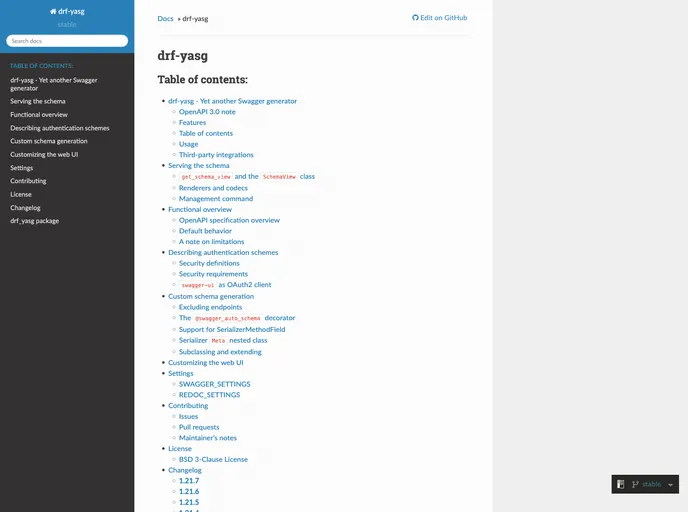Drf Yasg

Automated generation of real Swagger/OpenAPI 2.0 schemas from Django REST Framework code.
Overview
Drf Yasg is a remarkable tool designed to streamline the development workflow for anyone using the Django REST Framework (DRF). By automatically generating real Swagger/OpenAPI 2.0 schemas directly from your DRF code, it saves developers valuable time and reduces the risk of errors in documentation. This integration not only enhances productivity but also ensures that your API documentation is both accurate and up-to-date, which is crucial for effective communication with frontend developers and other stakeholders.
With Drf Yasg, you can expect an easy-to-use solution that fits seamlessly into your existing DRF project. The utility aims to simplify the documentation process while maintaining the flexibility you need to generate schemas tailored to your specific requirements.
Features
-
Automatic Schema Generation: Instantly create Swagger/OpenAPI 2.0 schemas by parsing your DRF code, eliminating manual documentation tasks.
-
Integration with DRF: Built specifically for the Django REST Framework, ensuring smooth compatibility and minimal setup.
-
Comprehensive Documentation: Generates complete API documentation that accurately reflects your endpoints, parameters, and expected responses.
-
Customizable Outputs: Provides options to tailor the generated schemas according to your project's unique needs, such as modifying or extending existing schemas.
-
User-Friendly Interface: Simple and intuitive interface makes it easy for developers of all levels to implement and utilize the tool effectively.
-
Version Control: Ability to manage different versions of API schemas, helping teams keep track of changes and maintain backward compatibility.
-
Support for Plugins: Extend functionalities with additional plugins to suit more complex API documentation requirements.

- Django
Django is a high-level Python web framework that encourages rapid development and clean, pragmatic design. It follows the model-view-controller (MVC) architectural pattern, providing an extensive set of built-in tools and conventions to streamline the creation of robust and scalable web applications.